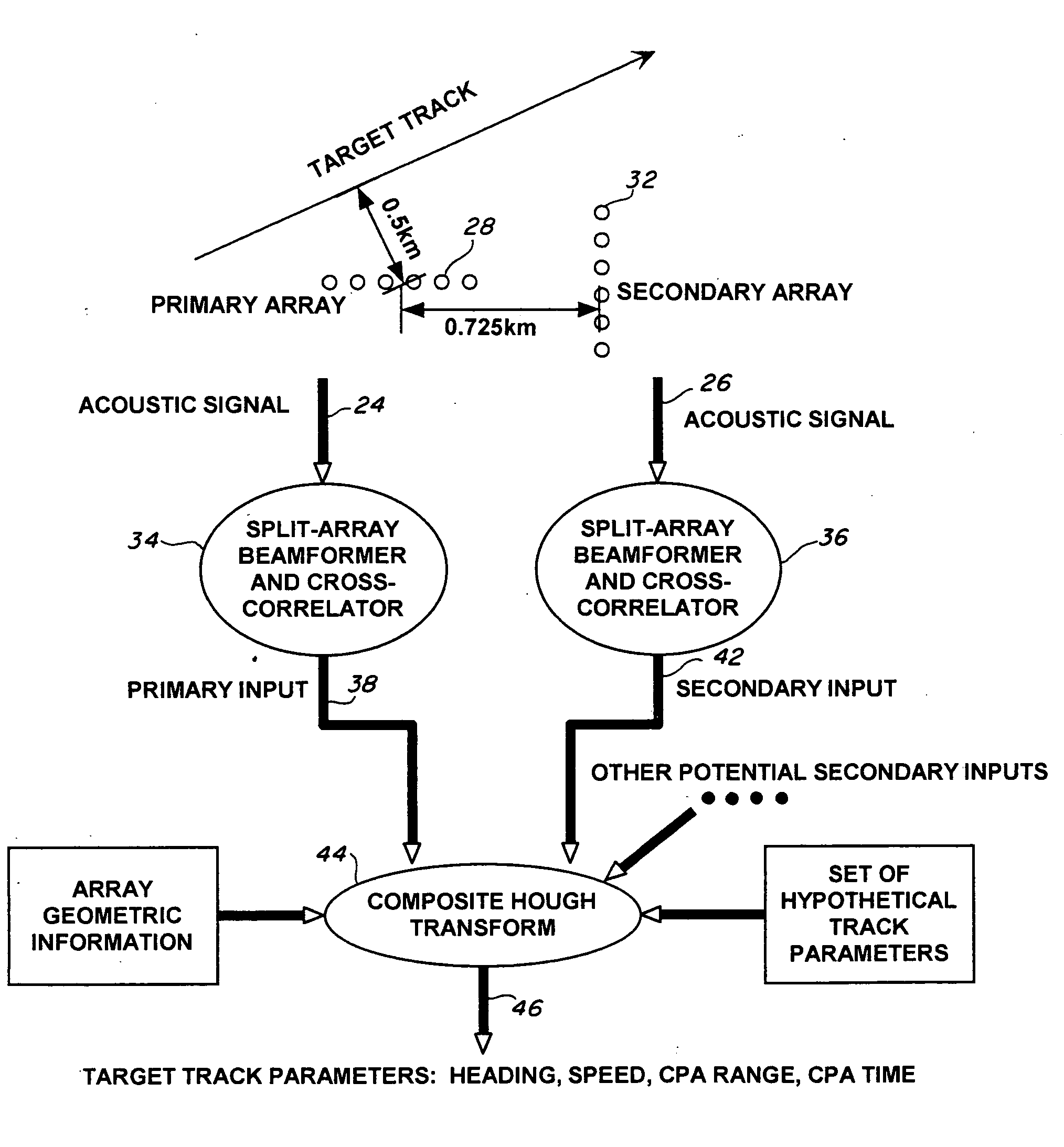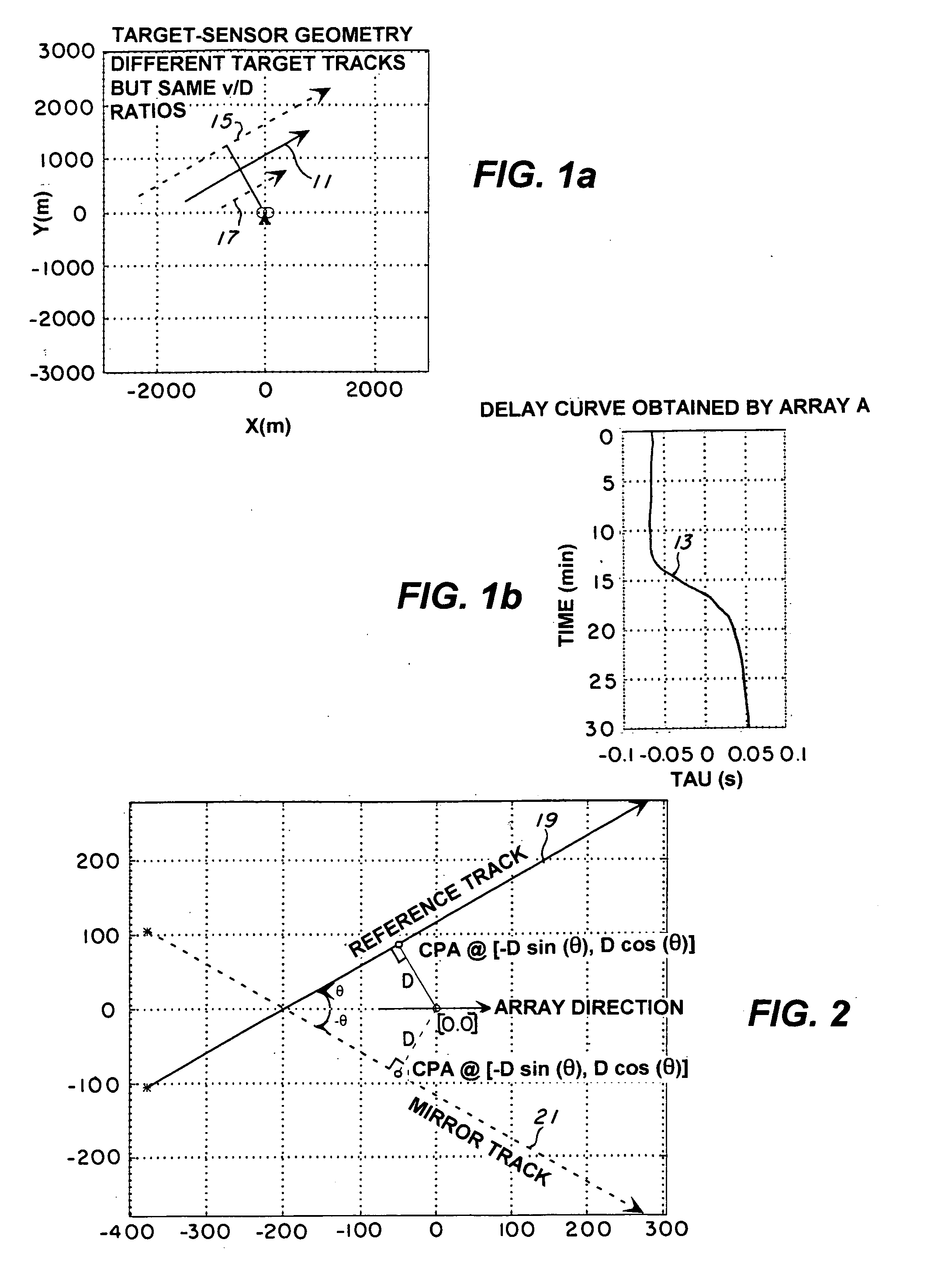Composite Hough transform for multitarget multisensor tracking
a multisensor and transform technology, applied in the field of underwater object target tracking, can solve the problems of mirror effect, dcht cannot distinguish between such tracks, and dcht cannot distinguish between these two tracks
- Summary
- Abstract
- Description
- Claims
- Application Information
AI Technical Summary
Benefits of technology
Problems solved by technology
Method used
Image
Examples
Embodiment Construction
[0093] An extension of Delay Curve Hough Transform (DCHT) is the Composite Hough Transform (CHT). Unlike the DCHT operating on a broadband correlogram produced by a single dual-channel sensor system, the CHT operates on multiple corresponding broadband correlograms produced at multiple neighboring dual-channel sensor systems. A broadband signal source can generate one correlation trace on each of the correlograms. Since these correlation traces are produced by the same signal source, they are constrained by a set of geometric relationships. By fully exploiting this set of constraints, the CHT fuses sensor data from multiple dual-channel sensor systems for target detection and track parameter estimation. The dual-channel system can be a split-array system; a linear array split into two subarrays with each subarray corresponding to one of the channels or two neighboring linear subarrays. One of the sensor arrays is chosen as the primary array; it is used to originate the different tra...
PUM
 Login to View More
Login to View More Abstract
Description
Claims
Application Information
 Login to View More
Login to View More - R&D
- Intellectual Property
- Life Sciences
- Materials
- Tech Scout
- Unparalleled Data Quality
- Higher Quality Content
- 60% Fewer Hallucinations
Browse by: Latest US Patents, China's latest patents, Technical Efficacy Thesaurus, Application Domain, Technology Topic, Popular Technical Reports.
© 2025 PatSnap. All rights reserved.Legal|Privacy policy|Modern Slavery Act Transparency Statement|Sitemap|About US| Contact US: help@patsnap.com



